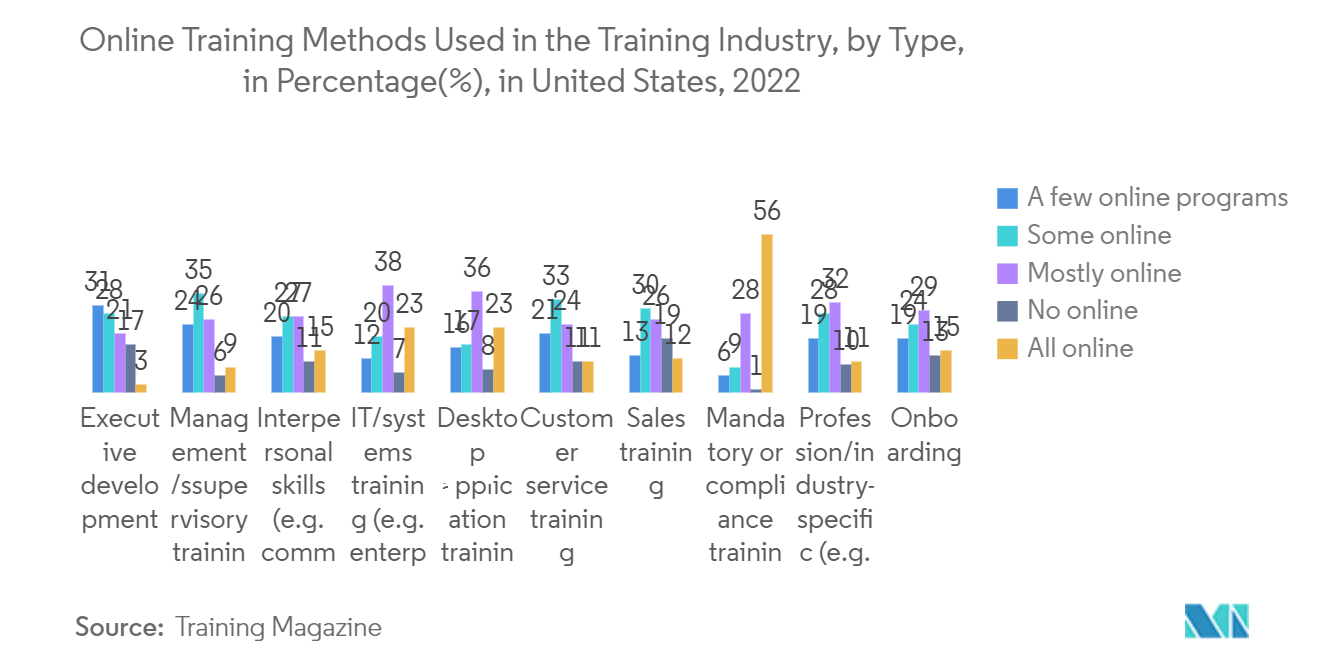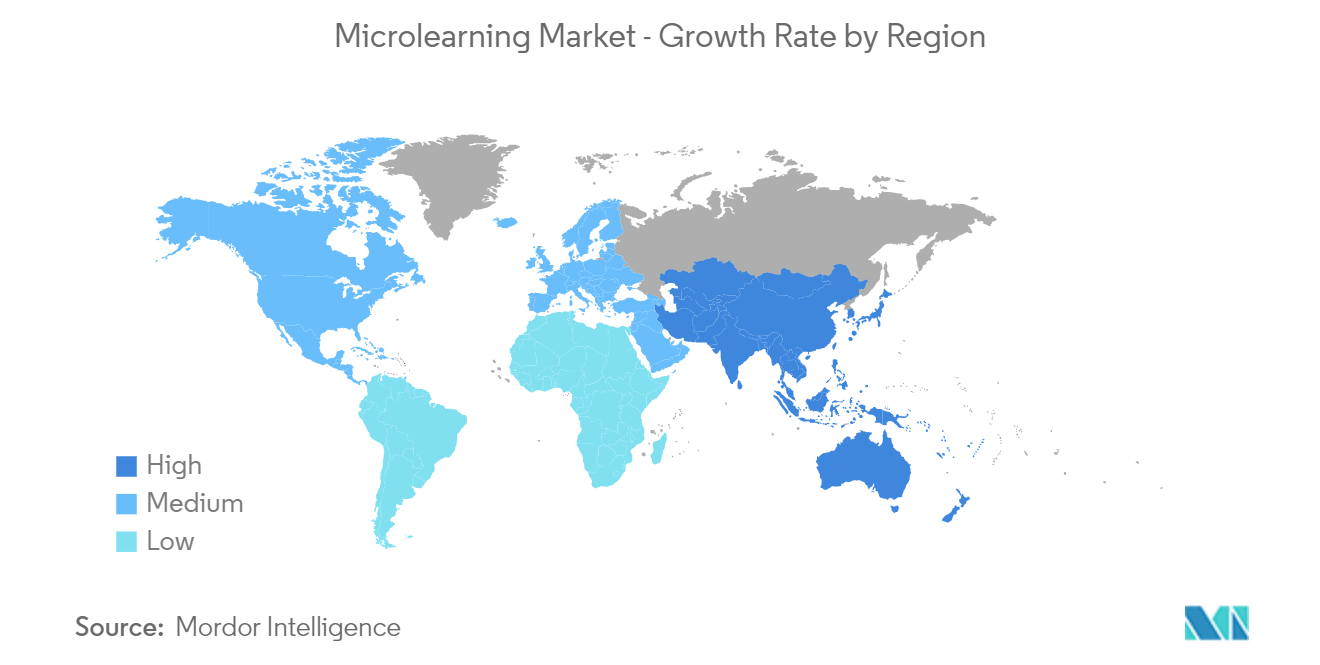Market Trends of Microlearning Industry
Cloud segment is expected to grow at a higher pace
- Companies have realized that skills-based processes effectively solve the increased difficulties since the epidemic. Employers need help to recruit qualified applicants for critical open positions and keep the talent they have hired. Companies that use a skills-based approach can increase the quantity and quality of people who apply for available jobs and help employees discover more possibilities to progress internally, which can help employers improve retention.
- Furthermore, the growing demand from millennials for higher flexibility and variation of jobs has significantly resulted in a considerable workforce consisting of freelancers changing their positions frequently and working on different projects at different organizations instead of doing routine long-hour jobs. Therefore, these freelancers have become a potential target audience for microlearning solution providers.
- Skills-based methods assist companies in locating and attracting a larger pool of talent comprised of individuals who are more equipped to fill these roles in the long run. Such approaches also open doors for atypical applicants, such as those who lack particular or usual qualifications on their resumes.
- In September 2022, Coursera, Inc. announced the expansion of Clips, which provides employees access to nearly 2,00,000 short videos and lessons designed to help them begin learning high-demand skills in less than 10 minutes.
- According to a survey conducted by Training Magazine in the United States, most online trainings were offered for compulsory or compliance training this year. More than half of the training businesses supplied mandatory or compliance training. Less than ten percent of organizations in this category supplied only online executive development training, whereas 17 percent of the same companies said they would offer such training in person this year.

North America is Expected to Hold Major Share
- The North American eLearning market accounts for a significant share of the industry. It is increasing due to the fast technological adoption by numerous organizations to provide adequate training to their employees. The growth of e-learning will provide immense opportunities to microlearning providers in the region.
- Another influencing factor is the increased penetration of digital devices. According to GSMA, the number of smartphone subscribers in North America is expected to reach 328 million by 2025. Moreover, by 2025, the region may witness an increase in the penetration rates of mobile subscribers (86%) and the internet (80%), the second-highest in the world. Increased device penetration will positively impact the virtual reality market in the region.
- Organizations that are focusing on modern learning, supported by the government, are leading to market expansion. Canadians for 21st Century Learning and Innovation (C21 Canada) is a national, non-profit organization that aims to 21st-century models of learning in education. It handles initiatives dedicated to creating a 21st-century learning vision and framework that inspires Canadians.
- Gamification in microlearning solutions is also a handy tool for increasing the overall productivity of employees by using various methods, such as rewards for task completion in case of project management or data contribution or access in case of knowledge management. However, the industry is also facing an absence of standardized guidelines for applying gamification due to the need for substantial academic research.
- According to a report from IBM, 75% of Gen Z'ers prefer to use a smartphone compared to other mobile devices. So, a mobile-focused training strategy in microlearning will grow in the future to interest them in learning. Changing economic, social, and behavioral aspects such as these leading to acceptance of technology at an exponential rate will only boost the market growth of microlearning in the region, making them sustainable solutions.


